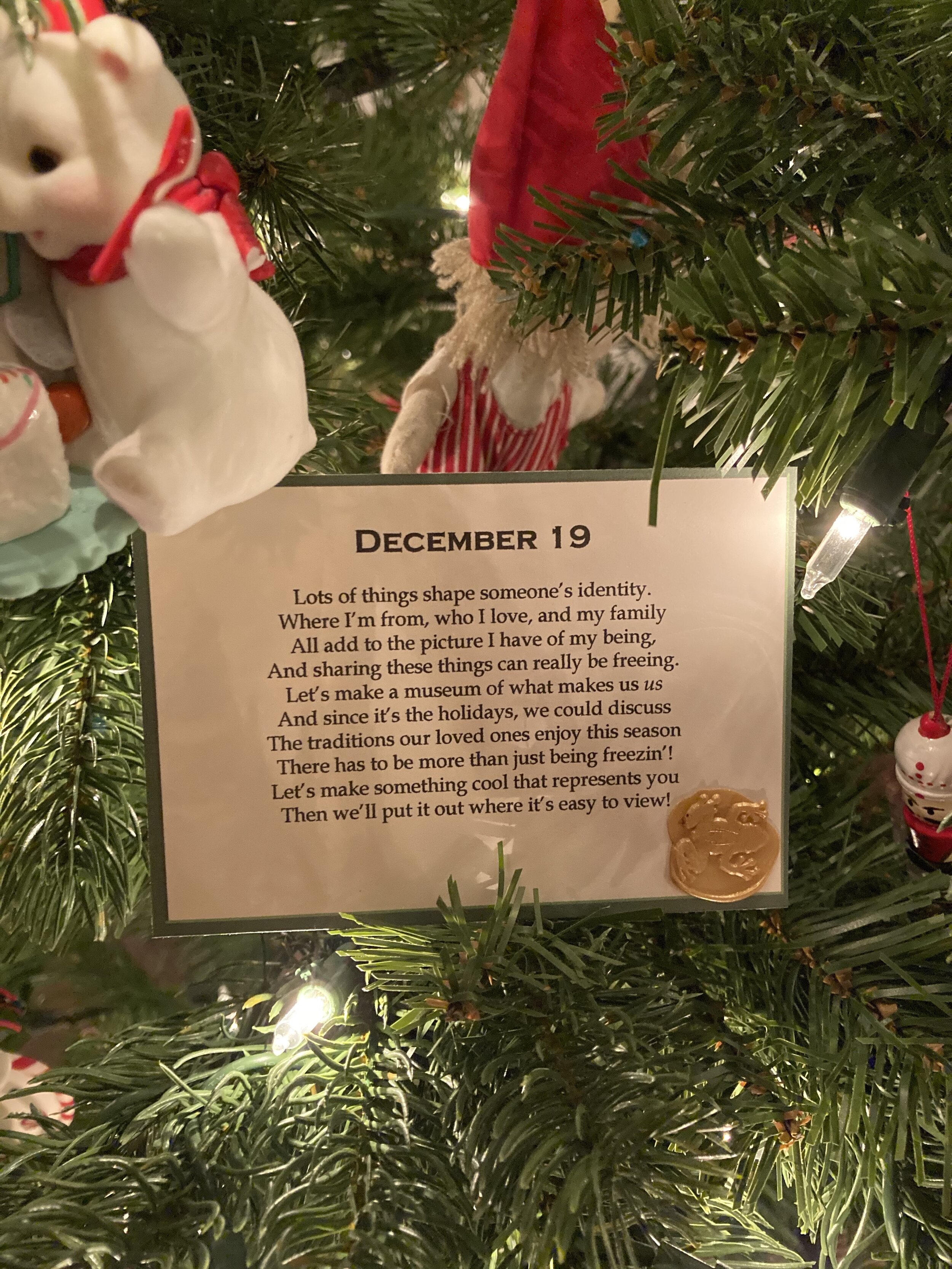Rhyming Prompt: December 19
Lots of things shape someone’s identity.
Where I’m from, who I love, and my family
All add to the picture I have of my being,
And sharing these things can really be freeing.
Let’s make a museum of what makes us us
And since it’s the holidays, we could discuss
The traditions our loved ones enjoy this season
There has to be more than just being freezin’!
Let’s make something cool that represents you
Then we’ll put it out where it’s easy to view!
Download the prompts for December 17-20 here as a PDF or here as a Microsoft Word Document (you may have already printed these—I’m just re-posting them here for convenience).
A close-up picture of the December 19 prompt. It is printed on cream cardstock with a green border and a small gold wax impression of a frog. It is nestled in a lit Christmas tree.
Other Materials:
Clay and/or other crafting supplies, like coloring equipment, paper, and recycled materials.
Suggested Pose:
Frantz is posed like a museum display himself, here. We have every small moderately artistic object in our house located up high on our bookshelves so tiny toddler hands don’t mistake them for toys. I’ve lumped them all together on the mantle to create a gallery effect for this prompt.
Frantz is sitting among other objet d’art, as though he, himself, is in a museum. These objet include a small bronze statue of a minimalist female body with wings reading a book, a carved granite bison, and some folk art carved wooden birds.
Activity:
This exercise is very slightly adapted from Teaching Tolerance’s “Identity Artifacts Museum” lesson plan.
The first step of this exercise is deciding where you want to go with it. You could a) talk about holiday traditions, or b) go more in-depth into social identifiers/identity descriptors/intersectionality.
If you choose a), chat with your child about all of their family traditions. At Christmas, my husband’s family always had poppers and watched A Charlie Brown Christmas. My family always read The Night Before Christmas and made a bigger deal out of stockings than presents. Now, those traditions have been passed down to the kids, and we’ve added some new ones of our own. We’ll talk about all the traditions and where they came from, then create an “artifact” that represents how the holidays feel in our family.
If you choose b), you’ll help your child think through all of the things that make them them. You can start with the easy intimate things: Lucy is Lucy because she loves giraffes and she could eat her weight at every meal; Clementine is Clementine because she adores spooky things and she wants to fly with all her heart, etc. Once you move through those things, you might suggest the following axes of identity:
Ability/disability
Culture
Family structure
Gender
Language
National origin
Race
Religion
Socioeconomic status/class
Brainstorm all the aspects of your child’s identity, and your own, and then model how you might represent the most important aspects of your identities through art. Family is really important to me, so I might try to draw my entire family, as many generations back as I am able. I might model a book out of clay, since books are basically my religion. What makes it into the physical representation doesn’t matter as much as the conversation that leads to the craft.
Rationale:
This is a gentle way to introduce your kids to the concept of intersectionality. Intersectionality is a term coined by Kimberlé Crenshaw, which is meant to function as “a prism for seeing the way in which various forms of inequality often operate together and exacerbate each other.” You can watch Crenshaw’s powerful 2016 TED talk on the subject here. By chatting about how we construct our identities, and how social groups and legal structures sometimes construct them for us, we can help our kids disrupt patterns of bias and violence. As Crenshaw notes at the end of her talk, “if we can’t see a problem, we can’t fix a problem.”
Book Recommendation:
There is no day this month that has a more perfect book recommendation: Mabel and Sam at Home by Linda Urban and Hadley Hooper. This book revolves around siblings who have just moved to a new house. As their parents unpack, they make sense of their environment through imaginative play. At one point in particular, they examine the uncanny way the furniture of their childhood feels both familiar and alien in a new environment by turning their living room into a museum filled with the artifacts of their lives. Whenever we read this book, my kids let their imaginations take the reins after. It is a gem. You can watch a read aloud here.
An image of the cover of Mabel and Sam at Home, by Linda Urban and Hadley Hooper.



